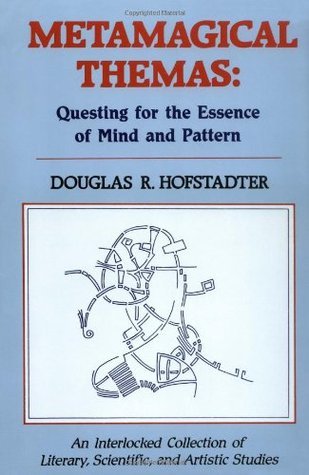
I Am a Strange Loop
Book Description
What if the essence of your very self is a mesmerizing loop of reflections? In "I Am a Strange Loop," Douglas R. Hofstadter dives deep into the enigma of consciousness, unraveling how the mind perceives itself through layers of complexity. With captivating insights from mathematics, philosophy, and neuroscience, this exploration reveals the intricate dance between self-awareness and identity. As it challenges conventional notions of what makes us uniquely human, readers are left pondering: could the essence of who we are really be woven from fragile threads of thought and perception?
Quick Book Summary
In "I Am a Strange Loop," Douglas R. Hofstadter explores the fundamental nature of consciousness and selfhood. Building on ideas from his earlier work, "Gödel, Escher, Bach," Hofstadter argues that the sense of "I" emerges from recursive, self-referential mental processes he describes as "strange loops." He blends insights from mathematics, logic, neuroscience, and personal experience to show how symbols and patterns in the brain generate self-awareness. Hofstadter contends that the self is not a static entity but a dynamic phenomenon arising from the brain’s intricate web of symbols referencing themselves. This philosophical exploration challenges readers to reconsider notions like individuality and mortality, ultimately suggesting that the "soul" is an emergent property of a looping, self-referential system.
Summary of Key Ideas
Table of Contents
The Concept of Strange Loops and Self-Reference
Hofstadter's central thesis is that consciousness and the sense of self are rooted in the concept of a "strange loop"—a self-referential structure in which the system refers back to itself in a complex, recursive way. Drawing inspiration from Gödel’s incompleteness theorem, Hofstadter argues that just as mathematical systems can refer to themselves, so can the mind. This strange looping is not only a mathematical curiosity but is the very foundation of self-awareness, allowing the brain to generate the persistent illusion of a unified self.
Consciousness as an Emergent Phenomenon
Through a multidisciplinary lens, Hofstadter examines how consciousness arises as an emergent property from the interactions of many simple elements, much like weather patterns or ant colonies. He unpacks how neural activity aggregates into highly structured patterns capable of representing themselves, forming a self-model through feedback loops. This emergent framework demystifies the "hard problem" of consciousness by reframing it as the result of recursive symbol processing within the brain’s circuitry.
The Role of Symbols in Identity and Thought
A significant part of Hofstadter’s argument centers on the role of symbols. He posits that the brain works by manipulating symbols, and through countless symbol-based loops, constructs the narrative of self. Identity is then not a core, indivisible substance, but an ongoing process—a dance of symbols referencing and recontextualizing one another. The boundaries between "self" and "other" are thus more fluid, allowing for the internalization of others’ patterns and, consequently, the partial transfer or persistence of selves beyond death.
Degrees of Self and the Fluidity of Soul
Hofstadter explores the gradations of selfhood, suggesting that "I" is not all-or-nothing. He introduces the idea of varying degrees of self, demonstrating how even non-human animals or artificial systems might possess proto-selves, and how the "soul" is constructed from the richness of internal loops. These loops are delicate and can exist at varying strengths, making the self a spectrum rather than a binary condition. Empathy and relationships can create strange loops of their own, where aspects of another person’s self take residence in our minds.
Implications for Mortality and Personhood
In tackling mortality, Hofstadter employs the strange loop metaphor to examine how aspects of a person’s identity can persist after death in the memories and minds of others. He personally reflects on the death of his wife to illustrate how the essence of a person can survive as faint, but real, strange loops in loved ones. Thus, personhood and the soul are not mystical essences but emergent biographies etched across many minds, made of loops that are fragile, intricate, and infinitely fascinating.
Download This Summary
Get a free PDF of this summary instantly — no email required.





